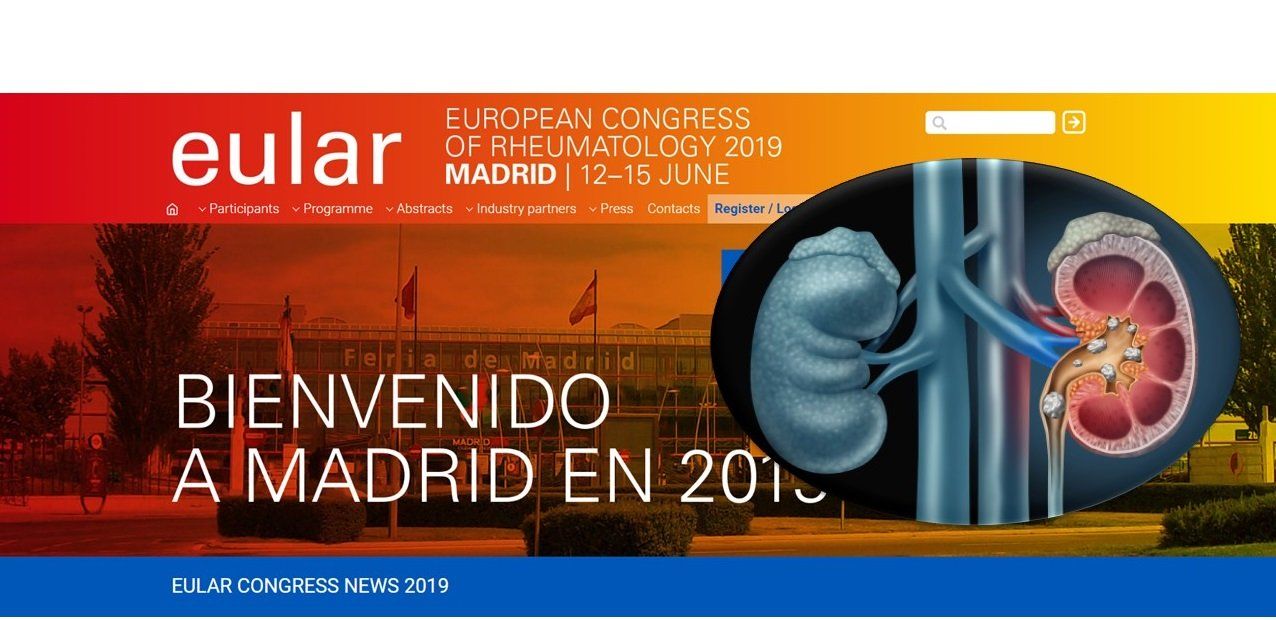Lupus Nephritis Remission with Cyclosporine, Mycophenolate Mofetil, Azathioprine
Lupus nephritis remained in remission for over 10 years in a group of patients who were treated with cyclosporine A, mycophenolate mofetil or azathioprine, shows a study presented at the European Congress of Rheumatology (EULAR) annual meeting this weekend in Madrid.
Lupus nephritis remained in remission for over 10 years in a group of patients who were treated with cyclosporine A, mycophenolate mofetil or azathioprine. (©FreshIdea,AdobeStock)

Lupus nephritis remained in remission for over 10 years in a group of patients who were treated with cyclosporine A, mycophenolate mofetil or azathioprine, shows a study presented at the European Congress of Rheumatology (EULAR) annual meeting this weekend in Madrid.
But even though patients in each of three groups achieved remission by 10 years, those who were treated with cyclosporine went into remission much more quickly-even those with more serious conditions.
The trial, by Lorenza Maria Argolini, M.D., University of Milan, included 104 patients who had lupus and lupus nephritis for over 10 years. They received six months of induction therapy which was followed by maintenance therapy of either cyclosporin A, mycophenolate mofetil or azathioprine (32, 36, and 36 patients respectively). Response measurers were taken at years one, five and 10 in which the primary endpoint was defined as complete response (eGFR greater than 60ml/min and proteinuria less than 0.5g/die, partial response: eGFR greater than 60ml/min and proteinuria greater than 0.5/die, no response: eGFR less than 60ml/min).
At the beginning of maintenance therapy complete, partial and no response rates were 28.2 percent, 59.3 percent and 12.5 percent with in cyclosporin A; 50 percent, 44.5 percent and 5.5 percent with mycophenolate mofetil; and, 38.8 percent, 55.2 percent and 6 percent with azathioprine.
At one year, 72 percent of cyclosporin A patients achieved complete remission as compared to 64 percent of mycophenolate mofetil patients and 44 percent for azathioprine patients.
At five years, remission was achieved in 81.5% percent of cyclosporin A patients, compared to 81 percent of mycophenolate mofetil patients; and, 86 percent of azathioprine patients.
At 10 years, remission was achieved in 88 percent of cyclosporin A patients, compared to 70 percent of mycophenolate mofetil patients; and, 68 percent of azathioprine patients.
Both the American College of Rheumatology and EULAR recommend starting treatment with induction therapy with glucocorticoids and either cyclophosphamide or mycophenolate mofetil. Maintenance therapy commences once induction therapy is completed.
The results suggest maintenance therapy with cyclosporine A leads to a more rapid remission of proteinuria compared to mycophenolate mofetil or azathioprine (AZA) in patients with lupus nephritis.
“Lupus nephritis is a serious condition requiring early aggressive therapy to achieve remission, however, the type and duration of immunosuppression after achieving response remain a matter of controversy,” said John D. Isaacs, M.D., who served as chair of the EULAR abstract selection committee. “It is great to see these long-term data which will help further our understanding in this complex area.”
REFERENCE:
Lorenza Maria Argolini, Elena Elefante, Francesca Saccon, et al. “Multicentric study comparing cyclosporine, mycophenolate mofetil and azathioprine in the maintenance therapy of lupus nephritis: 10 years follow up.” EULAR 2019; Abstract: OP0046.